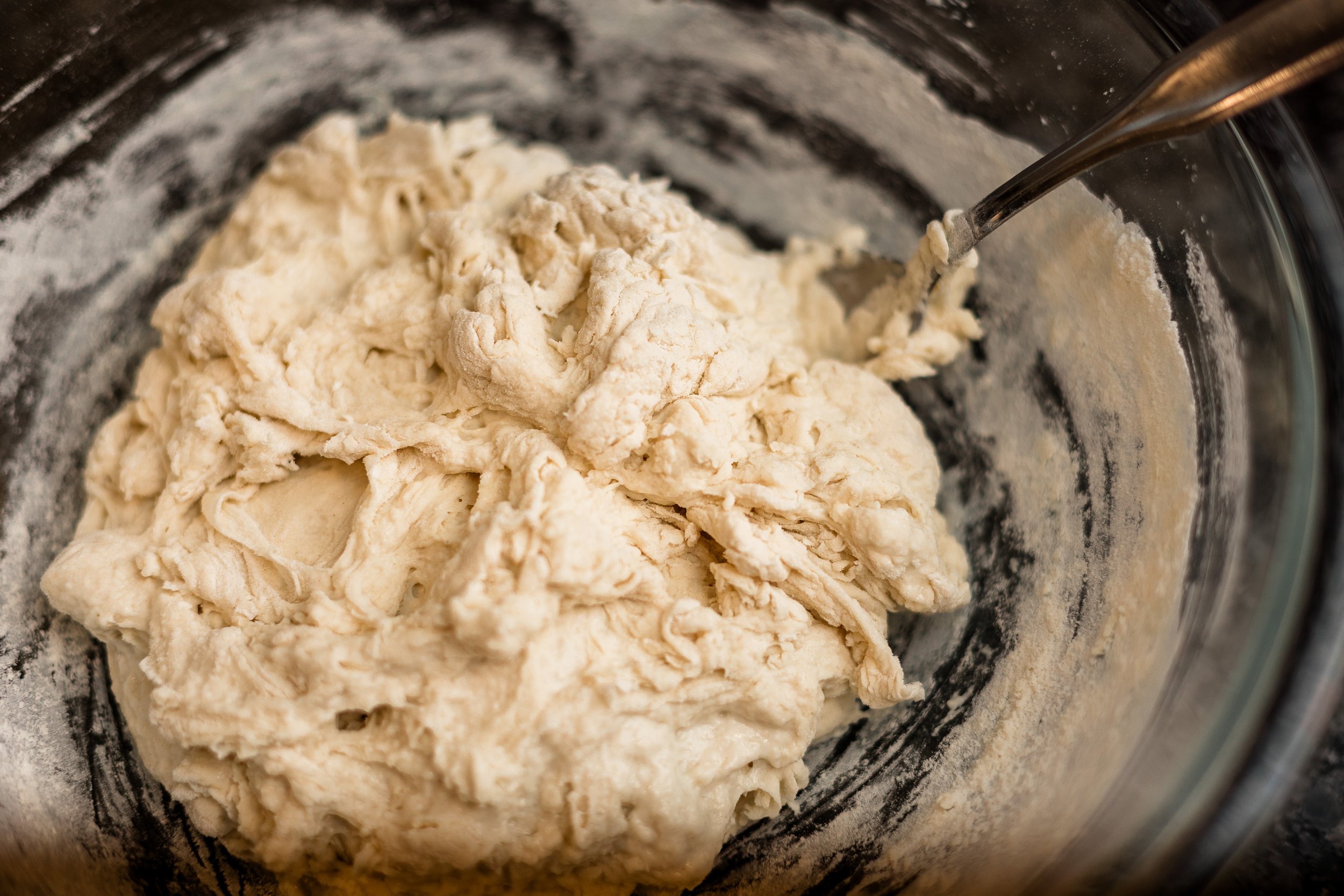All About Flours
Let’s talk about flours! I remember last Valentine’s Day, preferring a 50 lb bag of bread flour over a vase of flowers that would be gone in a week! Once you’ve gotten a few loaves under your belt, it can be super fun to experiment with different blends of flours in your sourdough loaves, as well as different flavors! Admittedly, I never think of flavor mix-ins until I’m ready to slice into my baked loaf of bread but I often play around with different flours during my initial mix! Below are some of the types of flour you’ll want to have on hand as well as some fun kinds you may want to dabble with!
*This post contains affiliate links. That means that I may be awarded a small commission for purchases made through them, at no added cost for you.
All-Purpose Flour- You’ll definitely want all-purpose flour on hand for feeding your starter! I also usually mix a small amount into my bread when I am adding whole wheat or freshly milled flour. The protein content of all-purpose flour is fairly low, so I add a small amount with my higher protein flours to keep my dough from being too stiff. Typically, I would add 150g in a 500g recipe.
Bread Flour- This makes up the bulk of my bread recipes. I may use only bread flour in a recipe or mix a few other types in but either way, the protein content of bread flour helps to give my bread structure. The protein content of any flour will directly affect the gluten you are able to build up into the loaf. A loaf of bread with a good gluten structure can rise and be light and airy! If I’m tossing together a quick loaf I will use all bread flour, about 500g. If I am blending with other flours I will use 300g in a 500g recipe.
Whole Wheat Flour- This has the highest protein content of the flours that I use but sometimes more is not always better. If you love bread, I’m sure you’ve had a slice or 2 of whole wheat bread that has been dense and less than enjoyable. In order to get the rich whole wheat flavor but maintain a lighter chew in my bread, I like to use whole wheat flour sparingly. Typically, I would add 50g in a 500g recipe.
Freshly Milled Flour- Naturally, after baking so much bread, I became very curious about milling my own flour! The health benefits are amazing, did you know a whole wheat berry has many essential vitamins and minerals that are stripped out of the kind of flour you can buy off the shelf? I’m still learning about the varieties of wheat and the best use for each of them but I was able to buy some Hard Red Wheat from a local farm but if you can’t find a local supply I have heard great things about these! I also purchased Kamut and Soft White Wheat from Azure Standard. I love the texture and flavors these lend to my bread! I mill these in my Nutrimill just before adding them to my dough!
Here are my go-to flour combinations for a loaf of sourdough bread:
50g starter, 300g Bread Flour, 150g All-Purpose Flour, 50g Whole Wheat flour, 375g water, 12g salt
50g starter, 250g All-Purpose Flour, 100g Fresh Milled Hard Red Wheat, 150g Fresh Milled Kamut, 390g water, 10g salt
Lastly, you may be wondering how to store all this flour! I find these tubs are great for storing a small bag of flour in or starting a double or triple sized batch of dough and I use 2 of these to hold my 50 lb bags of flour (half in each tub). Label everything with painter’s tape so that you can update what the contents are as needed!



